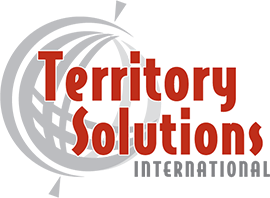The territory design process applied by Territory Solutions International includes five principal stages:
Audit – This initial stage of the territory design process is designed for gathering critical client and project information. This stage includes a review of the current territory design and deployment process, field structure and hierarchy, and management objectives and strategies. Additionally, an audit of all available data will be completed during this stage, including the review of data files and information regarding:
- Customers
- Prospects
- Products
- Markets
Analysis – The second stage of the territory design process includes evaluation and analysis of the market, customers and the organizational factors driving productivity and growth. With analysis of account characteristics, customer profiles can be developed that will simplify account segmentation and targeting. With evaluation of the critical business tasks executed by the organization, an effort based model can be developed to target deployment needs within each account segment. Finally, these analytical tools can be applied to various deployment scenarios to identify the impact on both revenues and profits for determining the optimal field force size.
Design – The third stage of the territory design process uses comprehensive territory design technology to create the proposed, optimal alignment quickly. Territory Solutions International then reviews and adjusts the optimized solution to ensure the optimal design is achieved for all territories created . . . territory assignments balanced in attribute and that minimize overall travel time. Proposed territory “center” locations can also be identified, and when matched to existing personnel, can facilitate the analysis of human resource needs. Decisions regarding placement, relocation and assignment of current field personnel can be balanced with recruiting efforts.
Review – Once the proposed alignment has been created, two levels of review should be completed to fulfill this step in the territory design process. The initial alignment review is completed with senior management to ensure the proposed assignments are consistent with company goals and expectations. Then, the approved alignment is taken to field management, where interactive field “review” sessions finalize the alignment. Field management involvement brings local knowledge that is critical to the development of an optimal solution. During these interactive sessions, changes are made to adjust and fine-tune the alignment and bring closure to the territory structure designed. This stage in the territory design process normally produces strong field management ownership and understanding of the final deployment solution.
Communication – The final stage of the territory design process includes timely communication of the new field assignments to all affected personnel and organizational levels. Territory and management “guides” are produced that contain both geographical maps and informative reports detailing information for each new organizational entity. The production and distribution of these flexible, client defined deliverables can be accomplished in either printed or electronic formats.
For additional information regarding our territory design process, please Contact TSI!
